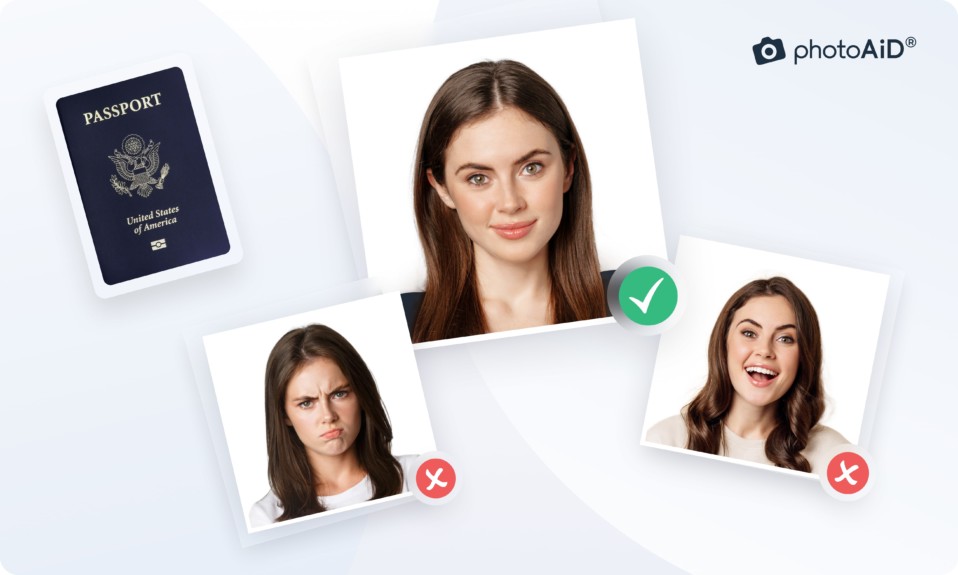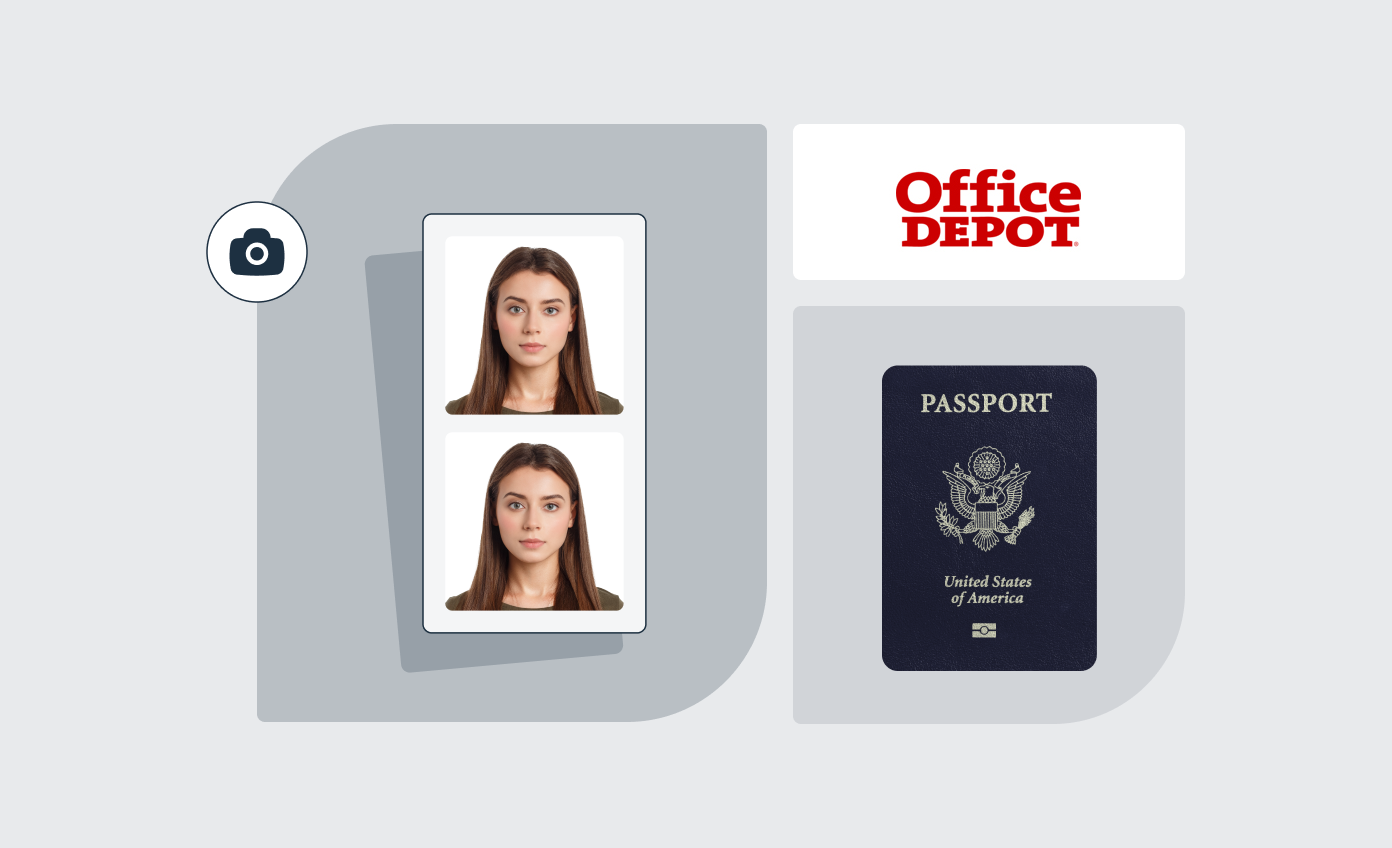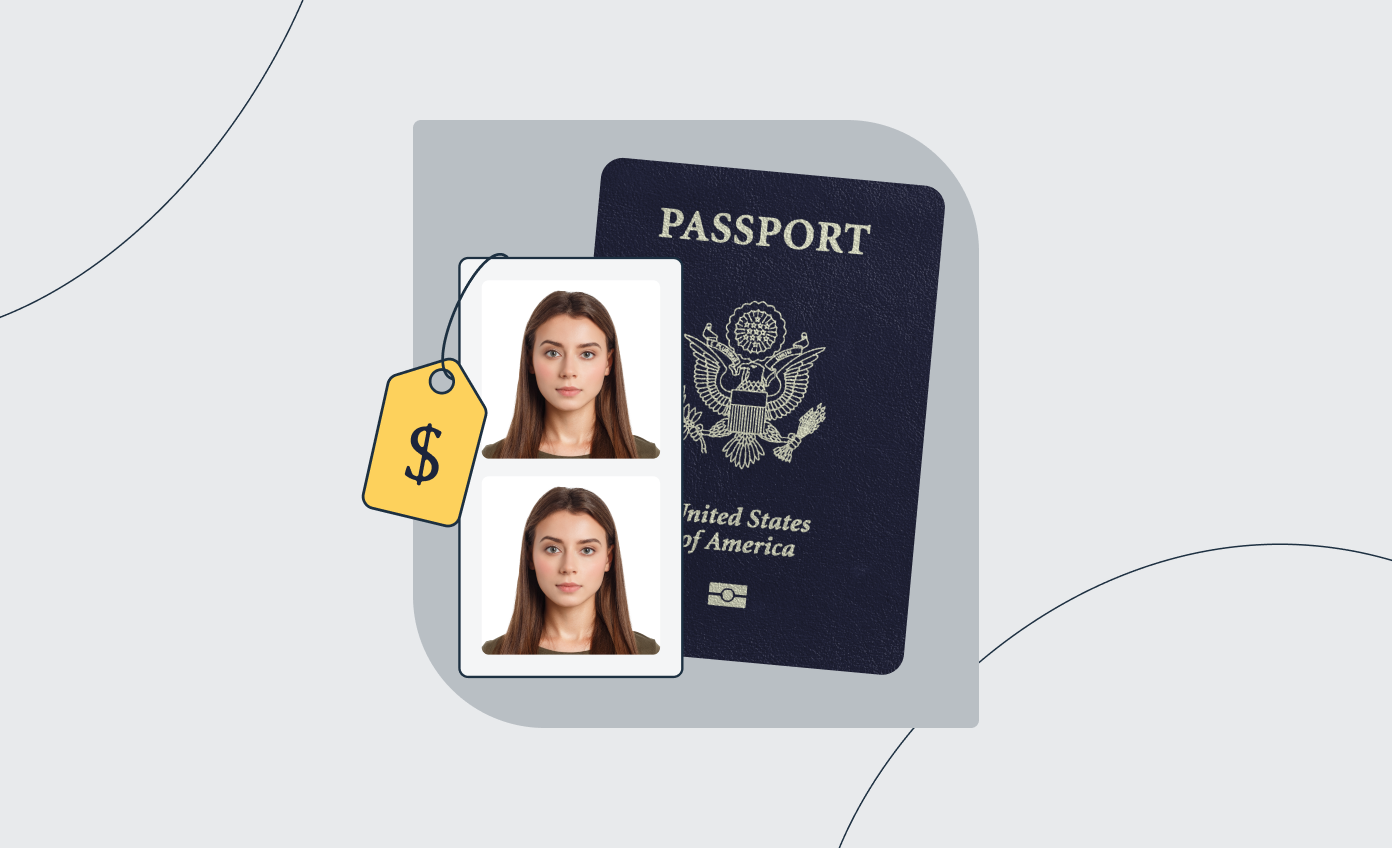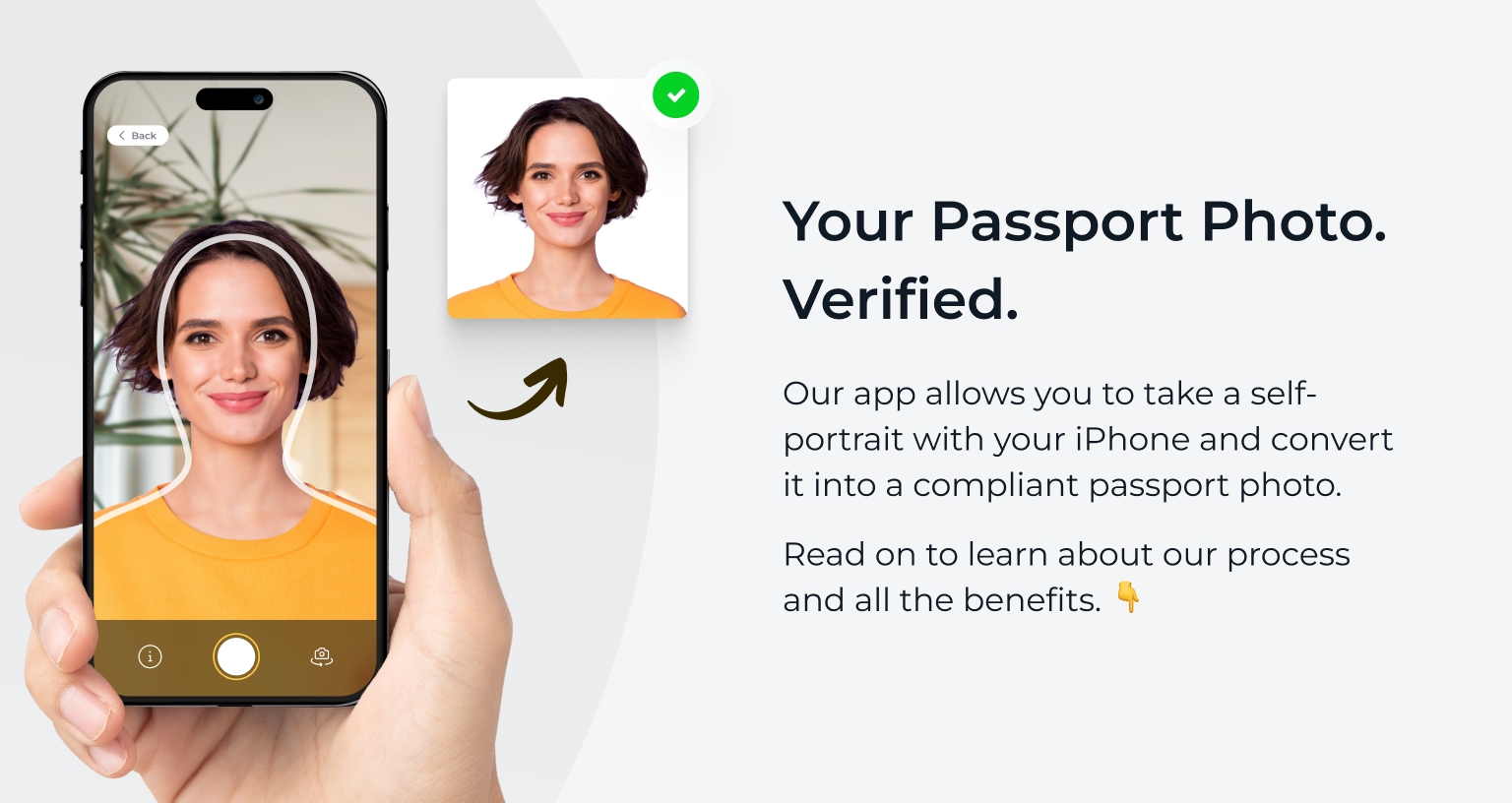What should a passport photo look like?
With non-compliant passport photos resulting in denied applications, it’s understandable to feel a little nervous and question whether your snap follows all the regulations mandated by the US State Department.
Don’t worry.
With these examples of good passport photos (and bad!) you’ll quickly see how to take an acceptable passport photo even at home.
Get a compliant passport photo in 3 minutes with PhotoAiD’s passport photo maker.
- Upload or take a photo.
- Let the PhotoAid Al check and fix it.
- A compliance expert will verify the result.
- Download or order a print. Done!


Get a digital passport photo or order prints with help from PhotoAiD®
100% acceptance, expert verified
2x money-back guarantee
3 minutes and done
11,000,000+ happy users
I was pressed for time and couldn’t get hold of a photographer. I found PhotoAiD, took a selfie, uploaded it, and had a compliant passport photo almost instantly. Getting a photo for my baby girl was a breeze, too!
Check out these related articles about US passport photos:
- How to Take a Passport Photo With an Android Phone?
- Instantly Convert ANY Photo to Passport-Size in Seconds!
- How to Take a Passport Photo With iPhone
- How to Take Passport Photo at Home: a Simplified Guide
Passport Photos: Examples With Explanations
Before jumping into specific passport picture examples, let’s get familiarized with US passport photo requirements.
| Requirement | Description |
|---|---|
| Measurements | 2×2” (51×51 mm) with square aspect ratio. Head between 1-1 3/8 inches (25–35 mm) from the bottom of the chin to the top of the head |
| Face & smile | Neutral facial expression or natural smile with both eyes open and mouth closed. Full face must be visible without shadows or coverings |
| Hair & accessories | No glasses, hats, or head covering unless part of recognized, traditional religious attire or used daily for medical purposes, and a signed statement is provided. Hair cannot cover or cast a shadow over the face |
| Facial hair | No specific requirements mentioned |
| Dress code | No uniforms, clothing that looks like a uniform, or camouflage attire |
| Posture | Face the camera directly with both eyes open |
| Shadows | No shadows present in the background or on the face |
Passport photos get rejected more often than you’d think. We’ve analyzed 10,000+ pictures and summed up the most common reasons ID photos get rejected. Check them out!
Measurements
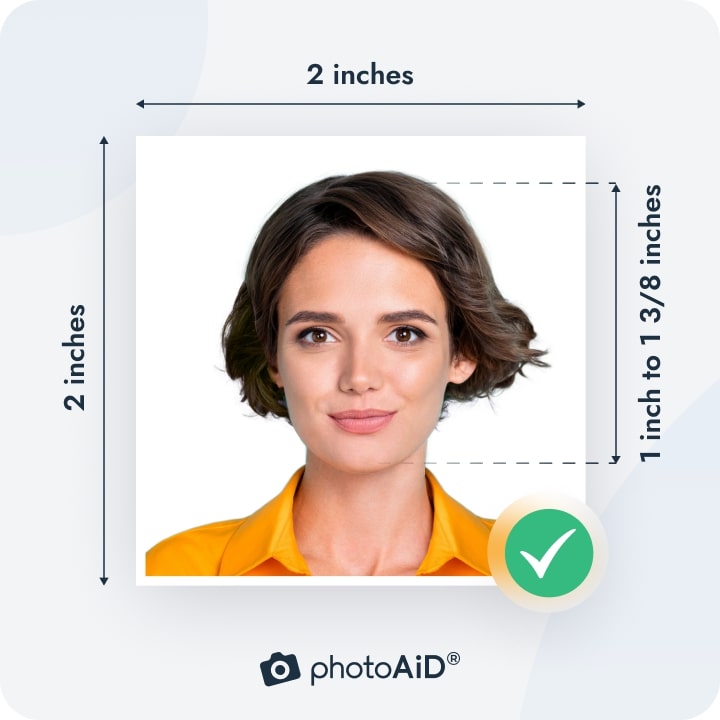
A passport photo example with the correct dimensions, head size, and aspect ratio.
Bad measurements
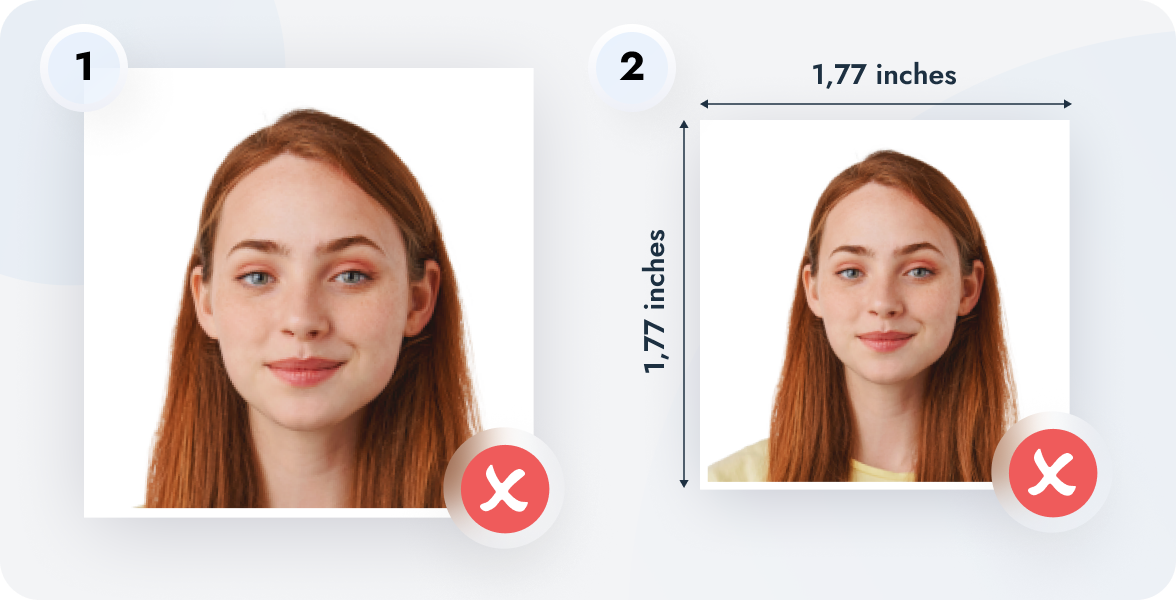
Passport picture examples with incorrect head size (1) and one with incorrect photo size (2).
Measurements—explained
The only acceptable US passport photo size is 2 inches by 2 inches (51×51 mm). There is no way of bypassing this rule.
Additionally, passport pictures used for US travel documents must have a square aspect ratio, and feature the subject’s head measuring between 1”–1 ⅜” (25–35 mm) in size.
Face & smile
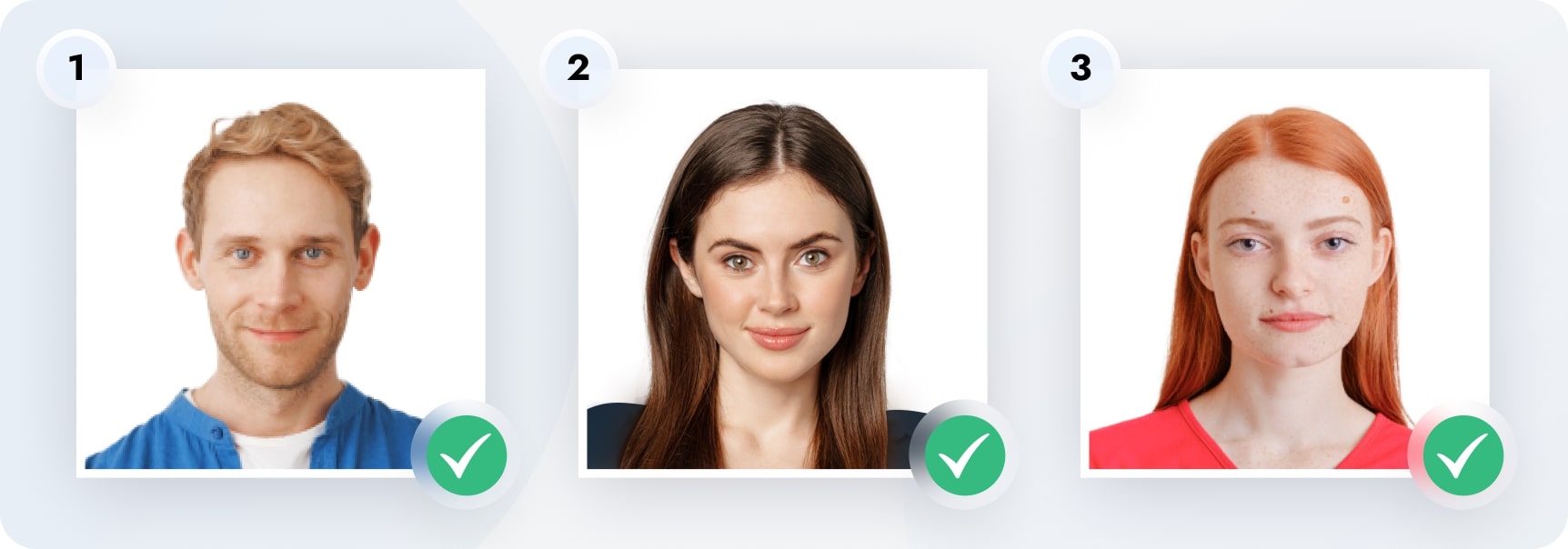
Acceptable passport photos showing close-mouthed smiles (1) & (2) and visible birthmarks with a neutral facial expression (3).
Examples of non-compliant face & smile photos
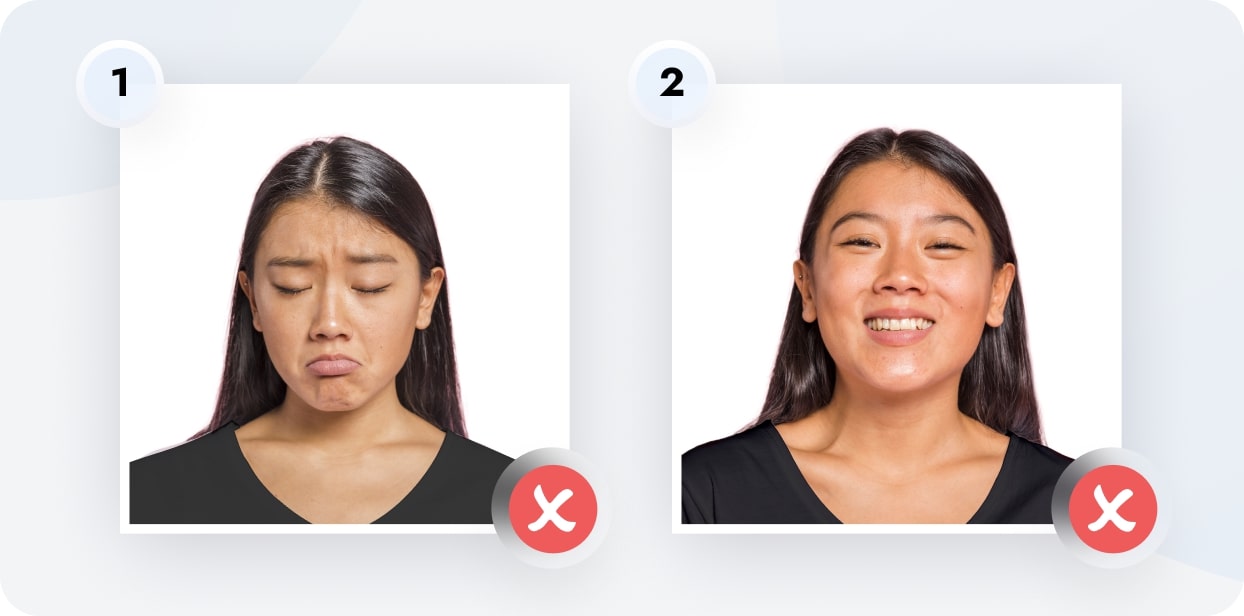
Non-compliant US passport photo examples where the subject is posing with their eyes closed (1) and one with an exaggerated open-mouth smile (2).
Face & smile—explained
The applicant’s face (and head in general) is the most important part of a US passport photo. As such, the face must be fully visible, and cannot be covered by hair, headwear, or any other accessories. Natural facial features, like freckles or birthmarks, must also be visible in the photo and cannot be covered with heavy makeup.
Regarding makeup, it must be as natural and light as possible since US passport photos must represent an individual’s natural colors and skin features.
Additionally, applicants must look directly into the camera with their eyes open. They should also avoid wide, open-mouthed, or “toothy” smiles and opt for natural or neutral expressions instead (i.e., pretend to be slightly bored). Important! When smiling for passport photos, the smile cannot distort the facial features in any way.
Hair & accessories
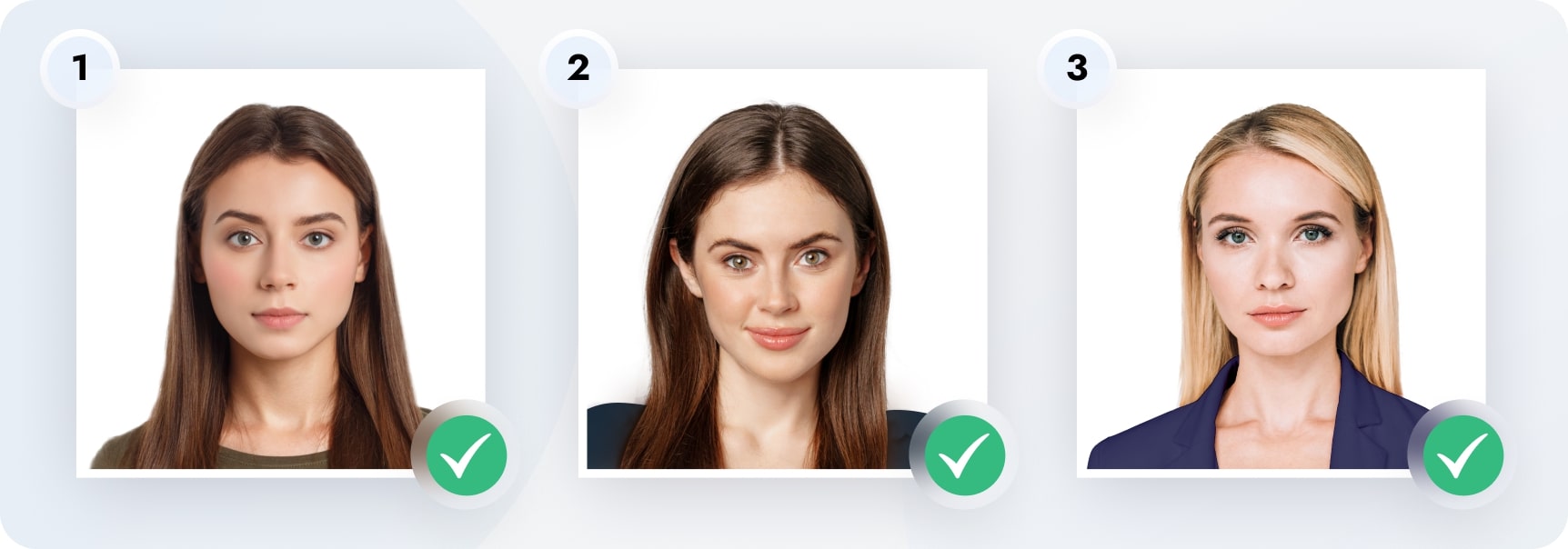
Examples of good passport photos where the subject’s hair & accessories follow all mandatory guidelines (i.e., no visible hair accessories (1), no biometric features obscured by hair (2), nor any bangs over the eyebrows (3)).
Unacceptable hair & accessories
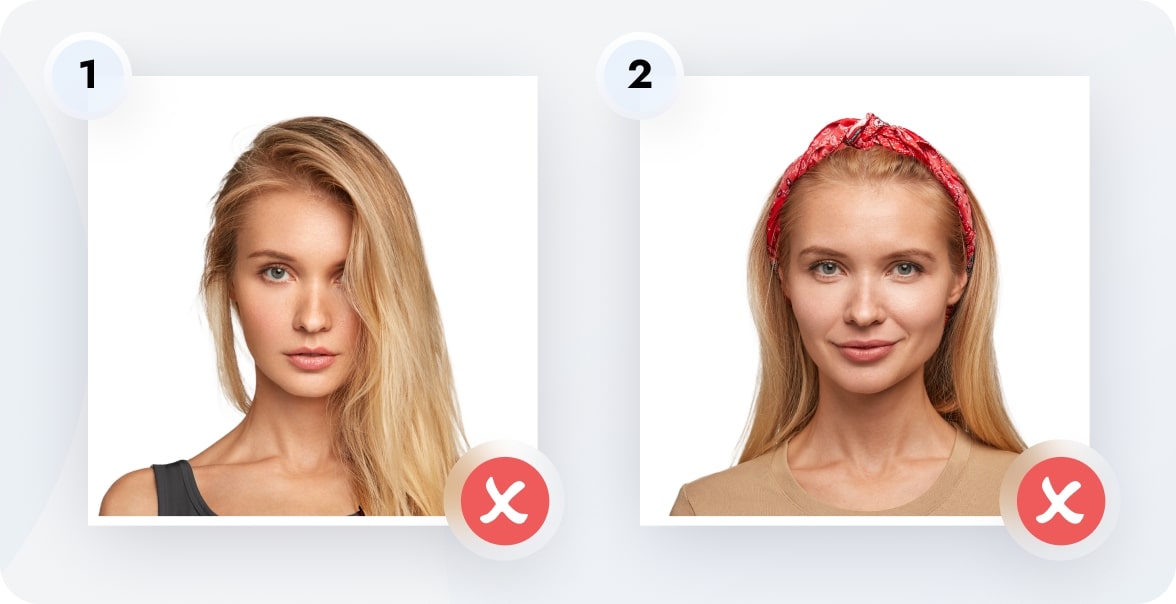
Examples of passport photos that will be rejected due to hair being out of the frame and obscuring part of the face (1) and another with visible hair accessories (2).
Hair & accessories—explained
Technically, there are no comprehensive rules regarding an applicant’s hairstyle. Feel free to wear your hair up or down as long as your face remains fully visible in the photo and your hair does not spill out of the frame.
Additionally, applicants must be careful with their choice of hair accessories—a simple black hairpin is fine, especially for adjusting your bangs. However, a floral headband or colorful hair tie will result in a rejected passport photo.
Facial hair

3 compliant passport photo examples featuring subjects with various styles of facial hair. All types of facial hair are acceptable so long as they don’t cast a shadow on the face.
Unacceptable facial hair
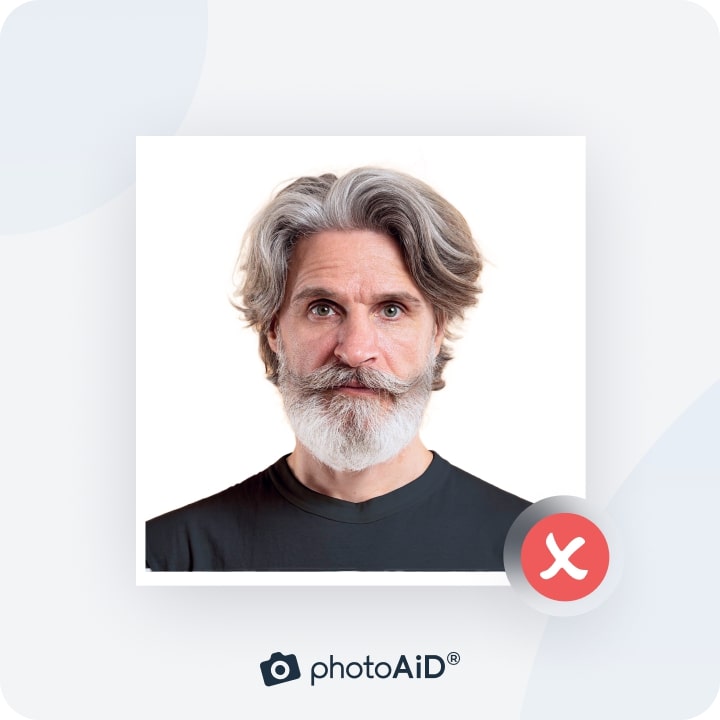
A non-compliant facial hair passport photo example (due to the elaborate mustache casting a shadow on the subject’s face).
Facial hair—explained
Since facial hair is not considered a biometric feature, applicants are free to have goatees, Santa beards, mustaches, or any type of fuzz in their passport photo.
Nevertheless, elaborate mustaches that cast a shadow over the subject’s face (e.g., “the Dali”) should be avoided as they invalidate the photo, thereby prolonging the passport application process.
Dress code
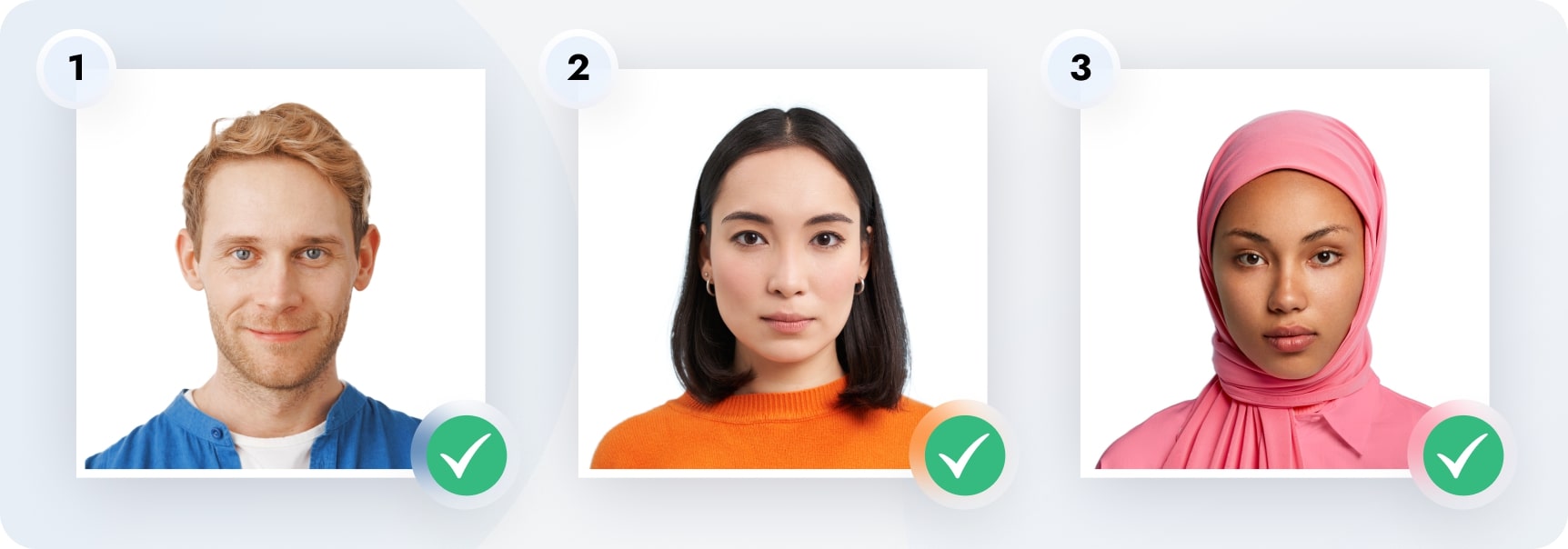
US passport photo examples of acceptable attire: Everyday clothes (1), earrings that do not obscure the face or reflect substantial amounts of light (2), and religious clothing including headwear so long as adequate documentation is provided (3).
Non-compliant attire
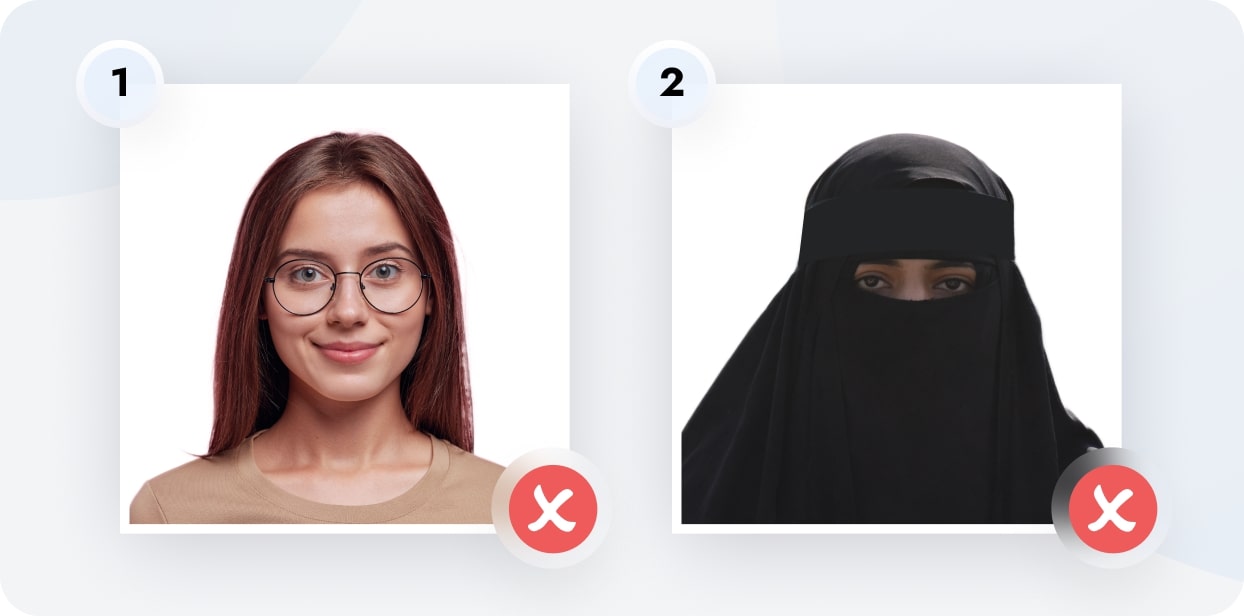
Rejected passport photo examples due to glasses present in the photo (1) and religious head covering obscuring the face (2).
Dress code—explained
It is probably one of the most common questions: “What should I wear for a passport photo?” A suit, an elegant dress? Would a T-shirt be okay? Let’s clarify what clothes are acceptable for US passport photos.
Dressing casually is recommended—anything from a jacket to a sweater, as long as it does not obscure your face or neck in any way.
The best option applicants can go for is to wear everyday clothes so long as they are not uniforms, uniform-like in appearance, or contain any type of camouflage.
When it comes to acceptable accessories, the situation is a bit more strict.
Any accessories that cover the face must be avoided—this includes large earrings, thick necklaces, or any of the previously-mentioned hair accessories.
All headwear (i.e., caps, hats, or any other head coverings), is not allowed in US passport photos.
However, hijabs, yarmulkes, or other religious or medical head garments are excluded from this regulation if signed documentation is provided. Even so, any permitted headwear cannot obscure or cast a shadow over the subject’s face.
What about glasses?
Technically, the US Department of State does not allow applicants to wear glasses for their passport photos. Even so, a signed doctor’s note will allow you to bypass this rule and keep your glasses on for your photo—just make sure there is no glare present in the final photograph.
Posture
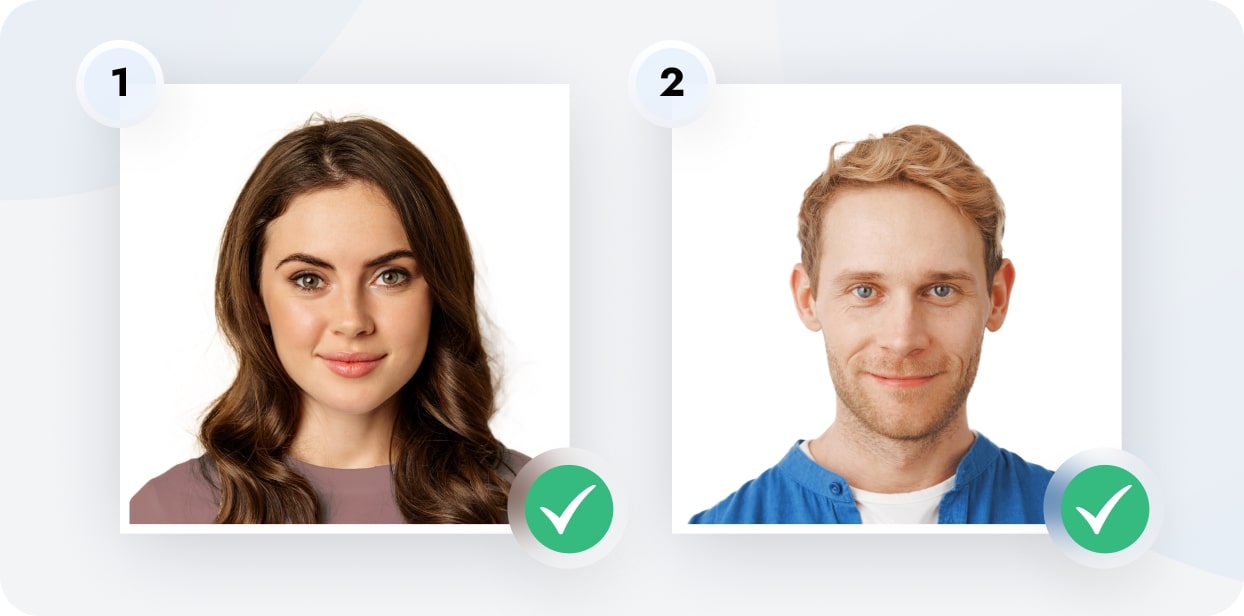
Passport photo samples of compliant poses (i.e., subjects directly facing the camera with their eyes open while maintaining a neutral facial expression).
Unacceptable poses
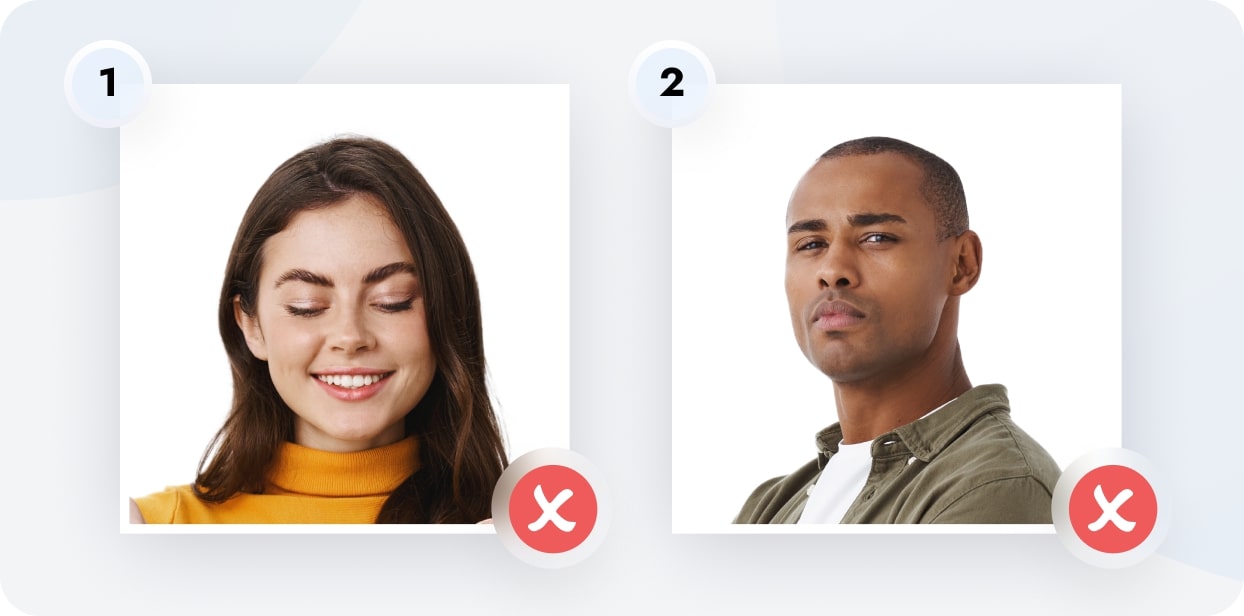
Faulty passport photo examples due to the subject’s head position—looking down with head tilted forward (1) and one where the applicant poses with his head rotated and shoulders not square to the camera (2).
Posture—explained
How to pose for a passport photo?
Applicants should always face the camera directly. A slightly rotated body or head is unacceptable for US passport photos. Both eyes must be open, and the mouth should be closed. The applicant’s head and top of the shoulders must be visible.
US citizens posing for passport photos can sit or stand straight with their arms relaxed and their facial expressions as neutral as possible.
Pro tip: Taking your passport photo at home is stress-free and allows you to get a more natural-looking picture (which is ideal for US passport photos).
Shadows
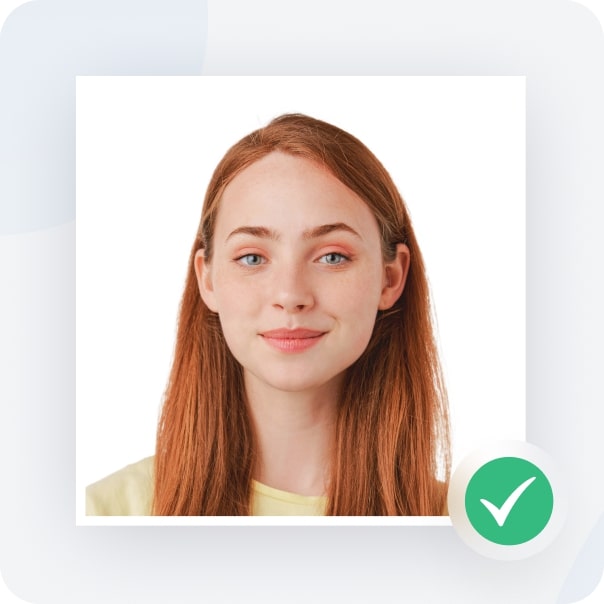
A correctly exposed passport picture example with no shadows present in the background or on the subject.
Unacceptable shadows
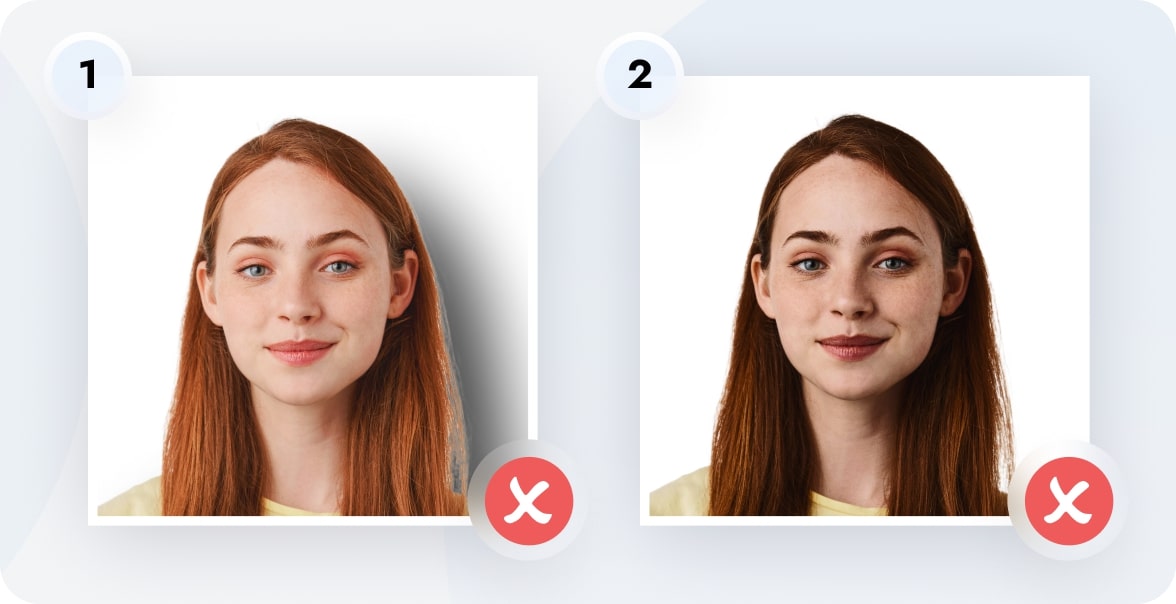
Two inadmissible passport photo samples showing distinct shadows in the background (1) and on the face and neck (2).
Shadows—explained
US passport photos must be properly exposed with the subject’s skin tones reproduced as accurately as possible.
As such, shadows are strictly forbidden in passport photos. This ban extends to background shadows or any other shadows on the applicant’s face or neck caused by poor lighting, hair, headwear, glasses, or any other non-permitted accessories.
US Passport Photo Examples: Summary

If you’re wondering, “How strict are passport photo rules, and do I really need to follow all of them?”
The answer is, “Very strict” and “Yes, you must follow all guidelines as closely as possible.”
That’s because passport photos have various aspects to consider, such as technical requirements, dress code, and pose. Deviating from the passport photo examples, even slightly, will result in a rejected passport photo and may cause a costly delay in your passport application.
Luckily, PhotoAiD® takes all the guesswork out of meeting the stringent requirements for passport photos mandated by the US Department of State. Simply snap or upload a digital image to the application, and we’ll make sure it passes with flying colors—no need to compare it against the examples. 😉
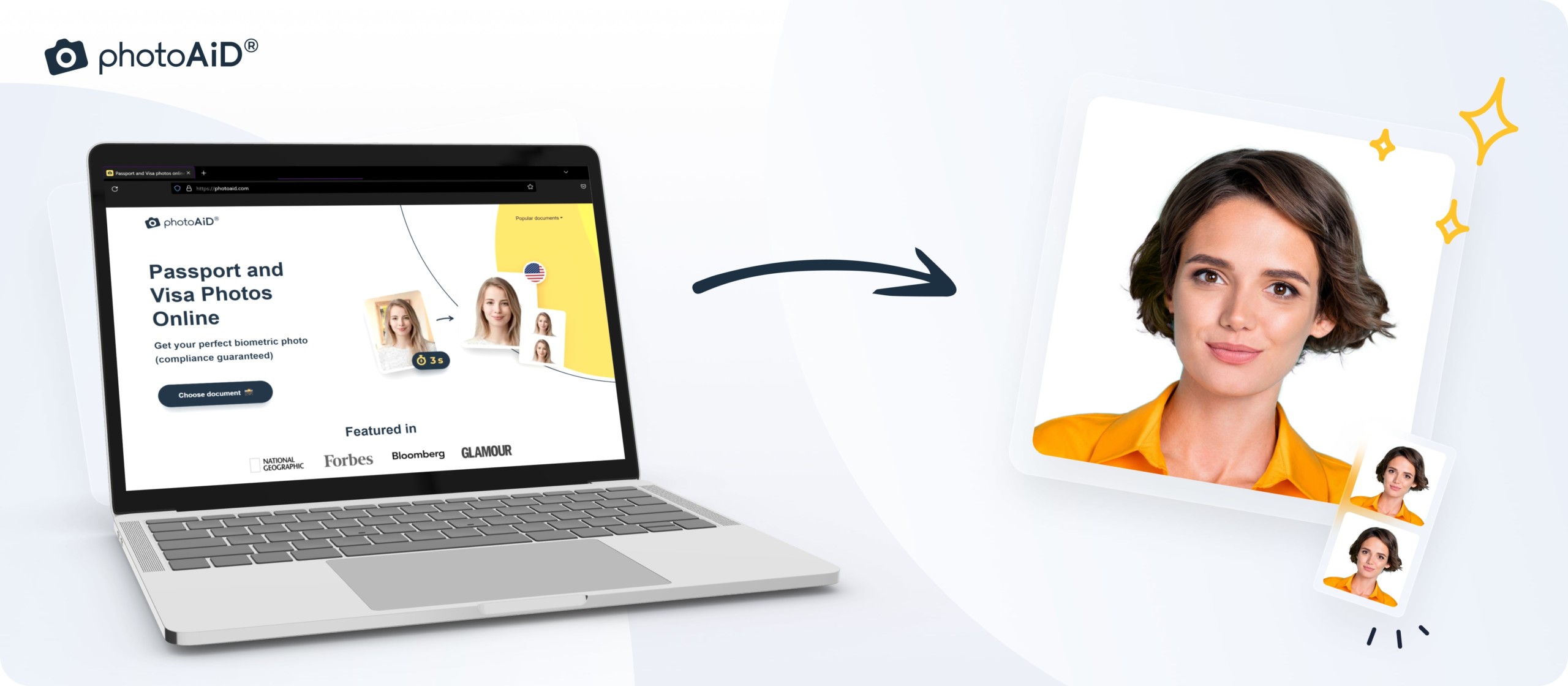

Simon Wojtyczka is a writer with experience living and working in 7 countries, each adding depth to his work. Holding a Master’s in Applied Linguistics, he has a profound grasp of language and its intricate ties to culture.
